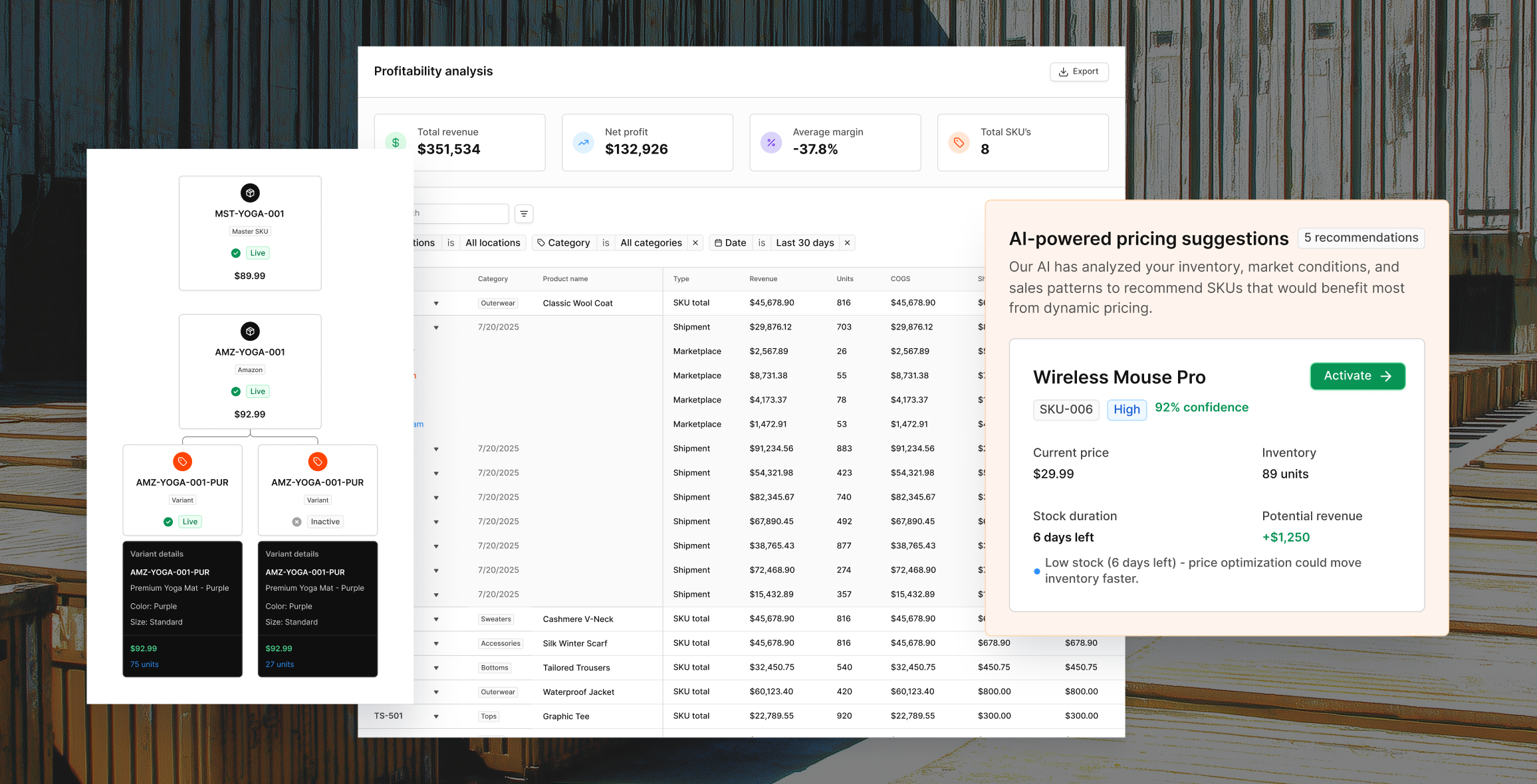Streamline Your Business: A Deep Dive into Ecommerce Returns Trends



Request A Demo
Take 30 minutes to see how Redo can help you retain more revenue through a more cohesive post-purchase experience for your buyers.
Executive Summary
The ecommerce landscape is booming, but this growth comes hand-in-hand with a significant challenge: product returns. As online sales surge, so does the volume of returned merchandise. This report delves into the current state of ecommerce returns, examining industry-specific return rates, analyzing trends over the past five years, and pinpointing the key factors driving these changes. The increasing complexity of managing returns underscores the critical need for robust ecommerce returns software solutions, such as Redo. These platforms streamline the returns process, enhance customer satisfaction, and ultimately foster brand loyalty.
The Current State of Ecommerce Returns: A Rising Tide
Return rates in ecommerce vary significantly across industries. Factors such as product type, customer expectations, and established industry norms all play a role. Let's break down the average return rates, from highest to lowest:
1. Apparel and Footwear (20-40% Returns)
This industry consistently tops the charts for return rates. Sizing discrepancies, style preferences, and the infamous "bracketing" phenomenon (purchasing multiple sizes or colors with the intent to return most) are major contributors.
2. Consumer Electronics (15-25% Returns)
Technical glitches, product complexity, and buyer's remorse fuel high return rates in this sector.
3. Home Goods and Furniture (10-20% Returns)
Shipping damage, differences between online representations and the actual product (size, appearance), and the challenge of visualizing these items in a personal space are common return reasons.
4. Books, Music, and Media (5-15% Returns)
While lower than other categories, returns still occur due to accidental purchases, damaged items, or shifts in preference.
5. Beauty and Personal Care (5-10% Returns)
The personal nature of these products and hygiene concerns generally mean lower return rates. However, reactions to ingredients, unmet expectations, and shipping damage can still lead to returns.
6. Groceries and Food (2-5% Returns)
This category has the lowest return rates, but issues like perishability, damaged goods, and order errors do occur.
Five-Year Trends: Ecommerce Return Rates on the Rise
Over the past five years, a clear trend has emerged: ecommerce return rates are increasing across most industries. Here's a closer look at the industry-specific trends, including approximate percentage changes in return rates:
1. Apparel and Footwear: A 5-10% Increase in Returns
Return rates in this sector have steadily climbed, rising an estimated 5-10% in the last five years. The rise of online-only fashion retailers and the growing practice of "bracketing" are key drivers. "Free returns" policies, while attracting customers, have also inadvertently encouraged more liberal ordering habits, further fueling this trend. The average return rate for this industry has shifted from a range of 15-30% to 20-40%.
2. Consumer Electronics: A 2-5% Rise in Returns
The increase in return rates for consumer electronics has been more moderate, estimated at around 2-5%. While improvements like detailed product descriptions, customer reviews, and virtual try-on features are helping to mitigate returns for established products, newer product lines are seeing a higher percentage of returns. The average return rate moved from approximately 13-20% to 15-25% over the past five years.
3. Home Goods and Furniture: Returns Up 4-8%
This sector has experienced a notable jump in returns, with an estimated increase of 4-8%. This reflects growing consumer confidence in purchasing big-ticket items online. The logistical challenges of returning bulky items remain a hurdle but are being slowly addressed by some retailers. The category's return rate changed from about 6-12% to 10-20% during the five-year period.
4. Books, Music, and Media: A Steady 1-2% Increase
Returns in this sector have remained relatively stable, with a minimal increase of around 1-2%. The ongoing shift to digital formats and the popularity of streaming services have reduced the volume of physical product purchases, contributing to this stability. The five-year shift was only from roughly 4-13% to 5-15%.
5. Beauty and Personal Care: A Modest 2-4% Growth in Returns
Return rates in this category have seen a slight uptick, estimated at 2-4%. This is driven by the proliferation of online beauty retailers and a strong emphasis on customer satisfaction, often demonstrated through lenient return policies. The return rates have grown from around 3-6% to 5-10%.
6. Groceries and Food: A Slight Increase of 1-3%
Even in this low-return category, rates have inched up by approximately 1-3%. The rapid expansion of online grocery delivery services has brought with it concerns about product freshness and order accuracy, which are the primary drivers of returns. With a previous average return rate between 1-2%, the past five years saw it increase to 2-5%.
Important Note: These percentage changes are estimates based on industry reports and analyses. Actual changes may vary depending on specific retailers, product subcategories, and geographic location. These are also industry averages, and it's important to remember that the best retailers in each industry may experience significantly lower return rates due to a variety of factors.
Key Factors Driving the Rise in Ecommerce Returns
Several interconnected factors are influencing the upward trend in ecommerce return rates:
Shifting Consumer Behavior
- Increased Online Shopping: The convenience of online shopping has fueled more impulse purchases and a willingness to experiment with new products, naturally leading to a higher likelihood of returns.
- Elevated Customer Expectations: Today's consumers expect seamless online experiences, and that includes hassle-free returns. Generous return policies have become a competitive necessity, setting a high bar for all online retailers.
- The "Try Before You Buy" Mentality: Lenient return policies have fostered a "try before you buy" approach, especially prevalent in apparel. Shoppers often order multiple items with the intent to return some, knowing the process is relatively easy.
Evolving Ecommerce Landscape
- The Rise of Mobile Commerce: Shopping on mobile devices can lead to more impulsive purchases and less thorough product research, potentially contributing to higher return rates.
- Product Information Discrepancies: While many retailers have improved product descriptions and imagery, inconsistencies and inaccuracies still exist, leading to unmet customer expectations and returns.
- The Competition-Driven "Free Returns" Culture: The race to attract and retain customers has led to increasingly lenient return policies, including the widespread adoption of "free returns." This has created a "returns culture" that impacts all players in the ecommerce space.
- Supply Chain and Reverse Logistics Challenges: Inefficient reverse logistics processes can cause delays, product damage, and customer frustration, all of which negatively impact brand perception and can lead to an increase in return requests.
The Solution: Automated Returns and Exchanges with Ecommerce Returns Software
The increasing volume and complexity of ecommerce returns demand sophisticated solutions. This is where ecommerce returns software platforms like Redo come into play.
Redo: Streamlining Returns and Elevating the Customer Experience
Redo provides a cutting-edge, automated returns and exchanges platform designed to simplify the process for both retailers and customers. Here's how Redo enhances the buyer journey and strengthens brand experience:
- Self-Service Returns Portal: Empower customers to initiate returns or exchanges independently through a user-friendly portal, eliminating the need for time-consuming email exchanges or phone calls.
- Instant Exchanges: Redo enables seamless item exchanges, often allowing customers to receive their new item before the original is even shipped back. This fosters satisfaction and encourages brand loyalty.
- Customizable, Automated Rules and Workflows: Retailers can tailor their return policies, set eligibility criteria based on various factors (product type, purchase date, etc.), and automate approvals. This reduces manual effort and ensures consistent policy enforcement.
- Data-Driven Insights: Redo provides valuable data and analytics on return reasons, trends, and customer behavior. This allows businesses to identify product issues, optimize their offerings, and fine-tune the overall shopping experience.
- Branded Returns Experience: The returns portal can be fully customized to match the retailer's brand identity, creating a cohesive and professional experience for customers, even during the returns process.
The Impact of Redo: Transforming the Buyer Journey and Strengthening Your Brand
By automating returns and exchanges, Redo delivers a positive impact on the buyer journey in several key ways:
- Frictionless Returns: A smooth, easy, and transparent returns process minimizes customer frustration and demonstrates a commitment to customer satisfaction.
- Boosted Customer Lifetime Value: Positive return experiences build trust and loyalty. Customers who have a hassle-free return are more likely to make repeat purchases, increasing their lifetime value to your business.
- Enhanced Brand Perception: A customer-centric returns policy, facilitated by a platform like Redo, positions your brand as reliable, trustworthy, and customer-focused.
- Improved Operational Efficiency: Automation significantly reduces the burden on customer service teams, freeing them to focus on more complex issues and strategic initiatives that drive business growth.
- Data-Powered Decision-Making: The insights gleaned from Redo's analytics empower businesses to make informed decisions about product development, inventory management, and marketing strategies. These decisions can lead to a reduction in future returns and an increase in overall profitability.
Conclusion: Embrace the Future of Ecommerce Returns Management
The ecommerce returns landscape is in constant flux, driven by evolving consumer behavior and a dynamic retail environment. While returns present challenges, they also offer valuable opportunities to strengthen customer relationships and improve business operations. By embracing innovative solutions like ecommerce returns software, and specifically a platform like Redo, retailers can transform returns from a pain point into a strategic advantage. This fosters customer loyalty, optimizes efficiency, and drives sustainable growth in the competitive world of ecommerce.






